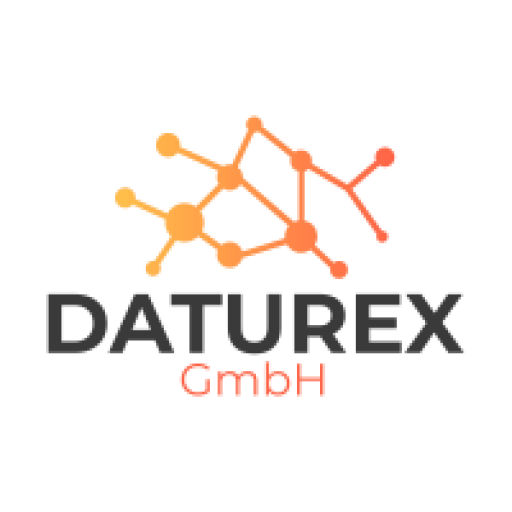The IT world is facing constant challenges. Agile methods and DevSecOps 2024 offer solutions for modern development teams. They enable fast and secure Software development. The integration of security into the entire process is central to this.
DevSecOps extends the DevOps culture around important security aspects. It brings development, operation and security together. Automated tests help to identify risks at an early stage. The result is a holistic approach to the software life cycle.
Companies benefit from faster releases and higher quality. At the same time, the security risk is reduced. These methods adapt well to the changing requirements of the IT industry.
Important findings
- DevSecOps integrates security into the development process
- Agile methods promote flexibility and speed
- Automation plays a key role
- Cross-team collaboration is strengthened
- Focus on continuous improvement
Introduction to agile methods and DevSecOps 2024
The modern IT development is facing constantly growing challenges. Agile methods and DevSecOps 2024 offer innovative solutions for efficient and safe Software development.
Definition and significance for modern IT development
Agile methods revolutionize the Software development through flexible adaptation to changing requirements. DevSecOps 2024 extends this approach by integrating security into the development process right from the start.
- Faster market launch of products
- Increased software quality
- Improved collaboration within the team
- Early detection of security risks
Current trends and challenges
The IT industry is undergoing rapid change. Cloud-native technologies, microservices and containerization are shaping the modern IT development. These trends bring new opportunities, but also challenges.
| Trend | Advantage | The challenge |
|---|---|---|
| Cloud-native technologies | Scalability | Data security |
| Microservices | Flexibility | Complexity |
| Containerization | Portability | Orchestration |
The implementation of DevSecOps 2024 requires a cultural change. Teams need to overcome silos and establish close collaboration between development, operations and security. Continuous training is necessary to keep pace with the latest technologies.
The evolution from DevOps to DevSecOps
Software development has undergone a remarkable transformation in recent years. DevOps revolutionized the collaboration between development and operations. But with increasing security requirements, a new concept emerged: DevSecOps.
DevSecOps integrates security directly into the development process. It enables companies to remain agile while recognizing security risks at an early stage. This evolution was necessary to keep pace with the accelerated development cycles.
DevSecOps is no longer an option, but a necessity in modern software development.
The advantages of DevSecOps are manifold:
- Faster response to security threats
- Improved collaboration between teams
- Higher code quality through continuous security checks
- Cost savings through early fault detection
The transition from DevOps to DevSecOps requires a cultural change. Security becomes the shared responsibility of all those involved. This promotes a deeper understanding of security aspects throughout the entire development chain.
| Aspect | DevOps | DevSecOps |
|---|---|---|
| Focus | Speed, quality | Speed, quality, safety |
| Security integration | Downstream | From the beginning |
| Team structure | Development and operation | Development, operation and security |
The evolution to DevSecOps is a decisive step for companies that want to remain competitive in the digital world. It makes it possible to view security as an integral part of software development and not as an obstacle to agility and innovation.
Core principles of agile methods
Agile software development forms the foundation for modern IT projects. It enables rapid adjustments and continuous improvements. In DevSecOps agile methods a key role by combining flexibility and security.
Scrum and Kanban in the context of DevSecOps
Scrum and Kanban are two central frameworks in the agile world. With Scrum teams work in short sprints to deliver product functions incrementally. Kanban on the other hand, visualizes the workflow and limits ongoing tasks.
| Feature | Scrum | Kanban |
|---|---|---|
| Time frame | Fixed sprints | Continuous flow |
| Rollers | Scrum Master, Product Owner, Development Team | No fixed roles |
| Changes | After the end of the sprint | Possible at any time |
In DevSecOps, teams integrate security aspects directly into Scrum sprints or Kanban-boards. They incorporate security reviews and tests as integral parts of the development process.
Flexible adaptation to changing requirements
Agile methods are characterized by their adaptability. In the fast-moving IT world, they enable teams to react quickly to new security threats or customer requirements. This flexibility is crucial for the success of DevSecOps initiatives.
Agile software development is like a chameleon - it constantly adapts to its surroundings without losing its core identity.
By combining Scrum or Kanban with DevSecOps practices, companies create a robust framework for secure and efficient software development. This promotes innovation and minimizes security risks at the same time.
Integration of security into the development process
The integration of security into the development process is a core aspect of modern IT practices. Two central approaches characterize this integration: the Shift-Left-approach and the Continuous safety monitoring.
Shift-Left: Early safety measures
The Shift-Left-approach shifted Security measures in early phases of the development cycle. This enables faster, cheaper and more effective adaptations. Developers integrate security checks as early as the code design stage, which uncovers potential vulnerabilities at an early stage.

Continuous safety monitoring and testing
The Continuous safety monitoring complements the Shift-Left-approach. Automated tools continuously check the code for security vulnerabilities. Technologies such as RASP and SCA support this by checking the code at every step of the process. CI/CD pipeline automatic Security tests carry out.
"Security is not a product, it's a process." - Bruce Schneier
This combination of early Security measures and constant monitoring forms the backbone of a robust DevSecOps approach. It enables teams to proactively minimize security risks while maintaining development speed.
Automation as the key to success
Automation plays a central role in the successful implementation of DevSecOps. It enables the seamless integration of Security tests into the entire development process. Automated processes enable companies to identify and eliminate vulnerabilities at an early stage, which significantly improves overall security.
An effective CI/CD pipeline is the heart of the Automation. It orchestrates various processes, from source code management to deployment. Automated Security tests are an integral part of this pipeline and ensure that every code change is checked for potential security risks.
Companies should analyze their entire development and operating environment to identify automation potential. This includes:
- Source control repositories
- Container-Registries
- API management
- Orchestration and release automation
- Operational management and monitoring
The automation of these areas leads to increased efficiency and reliability. It reduces manual errors and speeds up the development process. At the same time, it allows teams to focus on creative and strategic tasks instead of repetitive tasks.
"Automation is not just a tool, but a mindset that promotes continuous improvement and innovation."
Through the consistent implementation of automation in DevSecOps, companies can improve their security standards and shorten their development cycles at the same time. This leads to improved competitiveness and customer satisfaction in today's fast-moving IT landscape.
Cloud-native technologies and DevSecOps
The Cloud-native development is revolutionizing the IT landscape. It enables flexible, scalable solutions that fit perfectly with DevSecOps practices. Companies are increasingly relying on these technologies to remain competitive.

Microservices architecture and containers
Microservices architecture and Container are cornerstones of the Cloud-native development. They allow complex applications to be split into small, independent services. Each service runs in its own Containerwhich ensures flexibility and easy scaling.
Container platforms such as Docker and orchestration tools such as Kubernetes make it easier to manage these microservices. They offer standardized environments for development, testing and operation.
| Technology | Advantages | Challenges |
|---|---|---|
| Microservices | Independent scaling, simple updates | Complex administration, network security |
| Container | Portability, resource efficiency | Image security, runtime protection |
Security aspects in cloud development
Cloud-native development requires new security approaches. Key aspects are identity and access management as well as the isolation of microservices. Developers need to think about security from the outset and integrate it into every phase of the development cycle.
Dynamic security practices that adapt to container-specific guidelines are essential. They not only protect individual containers, but the entire infrastructure. Regular security audits and automated scans help to identify vulnerabilities at an early stage.
Cloud-native technologies offer enormous opportunities, but also require a rethink in terms of security.
Implementation of CI/CD pipelines with integrated security
CI/CD pipelines form the foundation of modern DevSecOps practices. Through Continuous Integration and Continuous Delivery enables short release cycles, accelerates development and improves software quality.
The integration of Security measures in CI/CD pipelines comprises several steps:
- Automatic build processes
- Extensive test phases
- Code analyses
- Security tests
Once these phases have been completed, the application is packaged and automatically deployed in the production environment. For a successful implementation of secure CI/CD pipelines are special tools for automated Safety tests are essential.
| Phase | Security measure | Tool example |
|---|---|---|
| Build | Dependency check | OWASP Dependency Check |
| Test | Dynamic analysis | OWASP ZAP |
| Deployment | Container scanning | Trivy |
| Production | Continuous monitoring | Prometheus |
The Integrated security in CI/CD pipelines ensures that security aspects are taken into account right from the start. This reduces risks and strengthens the overall security of the developed applications.
Cultural change: overcoming silos
DevSecOps is bringing about a profound change in IT culture. The Overcoming silos between development, operation and security takes center stage. Companies are increasingly relying on interdisciplinary teamsto integrate security into the development process right from the start.
Promoting cooperation between development, operations and security
The key to success lies in close cooperation between all those involved. Developers take on more responsibility for security aspects and carry out tests themselves. A "security champion" can facilitate the transition to this new way of working and act as a link between the departments.
Training and further education for DevSecOps skills
To achieve the necessary DevSecOps competencies targeted training courses are essential. Employees learn to recognize and eliminate security risks at an early stage. These training courses not only promote technical skills, but also a culture of shared responsibility for secure software development.


Recent Comments